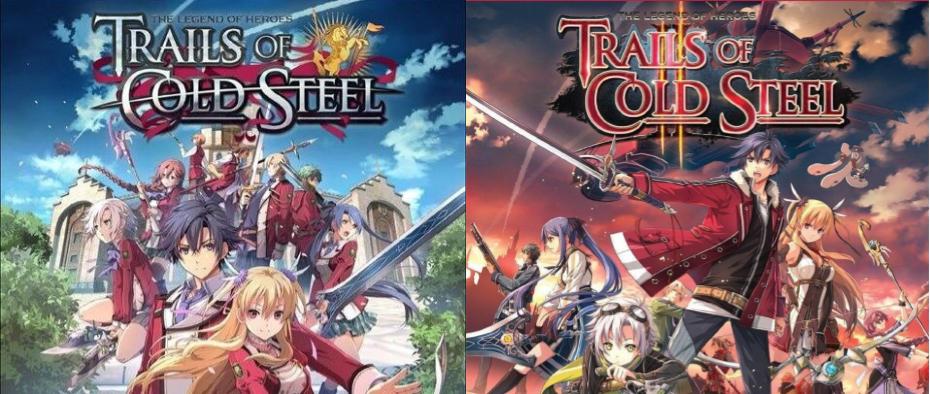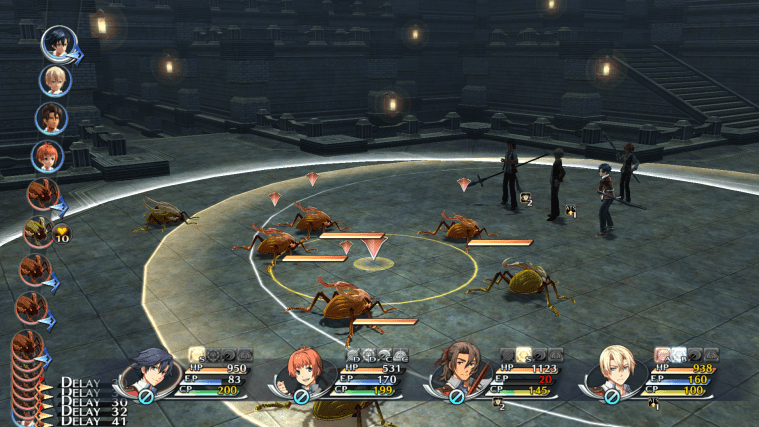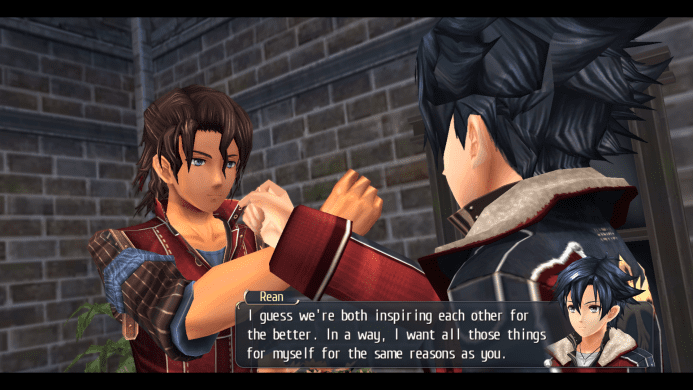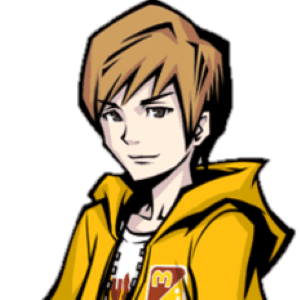Continuing the theme of playing RPGs over the summer, after reviewing a dearly beloved favorite last time it seems only fair to discuss something totally new. I had seen some profile pictures from this series in the past, but only recently discovered The Legend of Heroes games in earnest this year. Little did I know that my innocent purchase of the first game would send me on a 100 hour adventure across two games! To assess whether it was worth the investment is why I’m here today.

Developed by Nihon Falcom, published by Xseed Games, and released in 2015 and 2016, The Legend of Heroes: Trails of Cold Steel I and II are anime role playing games released for Playstation 3, as well as Playstation 4 and Windows at later dates. Its premise follows a group of military academy students taking a special curriculum that sees them traversing their homeland and being swept up into the country’s politics as social tensions reach their breaking point. The player interacts with the game by fighting turn based battles, completing various requests, allotting time to develop relationships with classmates, and a lot of reading. Note that I played the Steam version of the game for this review, which included extra voiced dialogue for some of the cutscenes.
Now before I go any further, I need to address the elephant in the room. Trails of Cold Steel I and II are technically the sixth and seventh games in the greater Trails series, and die hard fans will tell you that some of the important story beats rely on you knowing all of the previous games to get the full emotional impact. Knowing this, why did I dive into these games first? First, making myself spend the time and money to play all of the other games before the one I was interested in simply didn’t sound very appealing. Second, even if I did make that effort, games four and five aren’t available in the West so I couldn’t technically get caught up even if I wanted to. They literally announced the localization of those two games coming in 2022 while I was playing Cold Steel II! Beyond the practical reasons, the Cold Steel games have a bit more of that modern appeal that helps get my foot in the door, and… to be honest I just thought an RPG setting framed around train travel sounded cool. With that little detail established, let’s get into the review proper.
Trails of Cold Steel
The story of Trails of Cold Steel centers on Rean Schwarzer, a student who travels to the Erebonian Empire’s foremost high school for combat, Thors Military Academy. Things aren’t so simple for Rean however, as he finds himself selected for a special student group called Class VII which is entrusted with the testing of special new battle technology called the ARCUS unit and sent on field studies across the empire. Greater threats moving in the background of the nation reveal themselves over the course of the story, but overall the focus of Cold Steel I is on the Erebonian Empire itself, detailing its history, culture, technology, and conflicts. The setting is overall really well done, packed full of detailed lore and interesting locales that certainly spark the imagination. Of special mention is the town of Trista (where the school is), whose residents say different things when talked to for just about every single in-game day, sometimes following their own little self contained narratives that you can watch unfold and even help resolve through a quest! Couple all that with a ton of collectable newspapers and books and you have hours of immersive reading material that was a delight to explore.
The main cast of characters mostly consist of fairly standard anime archetypes at first, but eventually each one is given some development that fleshes them out into sympathetic protagonists you can get behind pretty well, even if some characters wait longer than others to get interesting. The actual plot of the story itself is rather uneventful though, so if you dislike slow burn games Trails of Cold Steel might test your patience. If anything, most of the real plot comes at the very end of the game as a set up for the sequel, which is why the two games feel more like one very long game (also the first game ends on a cliffhanger). On the whole, Cold Steel I has very specific storytelling priorities, but if you’re willing to go along with it, the sheer detail of it all is sure to captivate.
The gameplay of Cold Steel is largely divided between combat and exploration. Combat can best be described as a positional turn-based system, where the heroes and monsters take turns moving around the battlefield to close in and attack one another. The best attacks to employ not only factor in what types of damage and status ailments enemies are weak to, but also which attacks are within range and which ones you can line up to hit multiple enemies at once. The other major component of battle is resource management, as there is both an energy pool for casting magic Arts and a meter that is built up by attacking and getting hits that allows you to perform Crafts with various powerful effects as well as tide-turning S-Crafts. All of this is pretty well thought out and occasionally it can be a very engaging battle system, but on the whole combat winds up being aggressively momentum based. Between strong area damage and loads of status ailments that can take away or delay turns, fights often boil down to using a few key abilities at the beginning of the encounter to gain a foothold and then promptly running the enemy over, or the enemy stun-locking half your party and absolutely dominating. This is to say nothing of the fact that plenty of the boss fights can be cheesed by grinding out Craft meter and blowing your S-Crafts at the start of the fight. In summary, the combat is certainly fun, but more in a “how can I break this game clean in half?” kind of way rather than in depth or complexity. At the very least, you can earn EXP multipliers for fighting skillfully (not taking any damage, defeating multiple monsters in one strike, ect.) so grinding is a non issue and you really only see combat as much as you seek it out.

Characters are prepped for combat to some extent by buying and upgrading equipment, but the major method of preparation is in the quartz system. Each character’s ARCUS unit is equipped with slots for interchangeable items called quartz and functions similarly to the iconic Materia system from Final Fantasy VII. Each quartz can be equipped in order to gain stat bonuses, magic arts, unique passives, or some combination of two, or all three. Additionally, each character is equipped with a master quartz which levels up the longer you use it and provides all of the various boosts of other quartz to a greater degree, to the point where the master quartz ends up being something of a soft class system. Overall the battle customization winds up being quite a fun way to fine-tune your characters to match your fighting strategy, whether you meticulously collect and level up optimized loadouts or just work with whatever you happen upon.
The exploration half of the gameplay involves exploring towns and dungeons to complete various tasks to move the story forward and even more tasks that don’t move the story forward but have various other benefits. Dungeons are a little simple with mostly straightforward paths, very light puzzle elements, side paths to get goodie chests from, and monsters to fight or avoid as you wish. Town exploration on the other hand is focused around completing side quests that develop the stories of side NPCs, usually in the form of finding items or talking to the right people. While the side stories can be entertaining to witness, especially when it becomes something the characters will talk about during later exploration sections (Vincent’s quest about a secret admirer is my personal favorite example of this), the map having a quest marker showing you exactly where to go can really kill the feeling of exploration in some of the more mystery-based quests.
The last major mechanic in the exploration section is the character bonding activities. During the day you can spend bond points to view special cutscenes between Rean, his peers in Class VII, and others such as his instructor Sara, which net a large boost in link points that help generate special defensive and offensive tactics in battle. While traveling from the town of Trista to field study locations by train you can also get a little bit of bonding in by playing Blade, a fun little card game a bit like War if it was more skill based. These are easily the highlights of the exploration sections to me, since it allows you to learn more about the main cast in meaningful ways that add to their characterization a lot. This also plays into a subsystem of developing either a romance or virtuous friendship with a character of your choice near the end of the game. As someone who ended up spending all his time forging platonic relationships rather than shopping for dates, the game did obnoxiously tease Rean about possibly being homosexual in one scene, but other than I was genuinely satisfied by the friendship depicted between Rean and (in my case) Gaius.
Finally, some notes on the game’s presentation and music which, being mostly the same in both games, will not be repeated in the section on Cold Steel II. Despite being Playstation 3 titles the games are very clearly made on a tight budget, with character animation that’s stiff and repetitive, and special attacks having average flair. On the flipside though, the voice acting was fun and memorable with a large and talented cast, and the environment design of towns and highways is simple but very effective at making each location have its own feel and place in the world. It is definitely a mixed bag when it comes to presentation but Trails of Cold Steel certainly has its high notes. The music took a while to actually stand out for me, but once it did I thought it was well composed with pleasant melodies throughout and some real standouts later in the game. Cold Steel II recycled a lot of music and when it offered new tracks not many songs actually stood out, but I can forgive it because the opening theme “Senkou no Yukue” is way better than it has any right to be. Overall I can definitely see where the online discourse about the series’ amazing music comes from.
So all in all, I thought Trails of Cold Steel I was a fun popcorn JRPG with a stellar setting and fun main cast, which went a little bit over the top in its final act and pulled a bit of a cheap shot by ending in a cliffhanger. On the whole I was excited to see the story’s conclusion once I had bought the sequel on sale. All it had to do was take the new conflict in an interesting and sensible direction and develop the characters’ relationships further, while continuing to immerse me into its fascinating world. And boy, oh boy… did it ever literally go off the rails… no really there’s hardly any trains in the sequel.
Trails of Cold Steel II
Trails of Cold Steel II takes place one month after the conclusion of the first game and once again follows Rean Schwarzer on a new journey to find a way to help quell the chaos that has befallen Erebonia. The opening prologue of the game is a very strong start, with characters you’ve only been told about in the first game finally getting introduced properly, previous characters getting development which added a much needed humanizing element to them, and a raising of stakes that effortlessly capitalizes on Rean’s wants and fears. After the prologue though, the only sections of the game with any decent writing are Act II Part 3, and an epilogue section that helps to wind down the game.
I’ll try not to get too descriptive, but there are two major writing decisions that actively took me out of the story. The first being in Act I where the party relies on an extremely contrived and convenient method of magical transportation in order to skirt the question of how they intend to travel the empire amid the current events happening within it , and in general magic becomes a suffocatingly persistent excuse to solving certain conflicts where the first game rarely did so. The second and more egregious decision is that Class VII is constantly shown to be outmatched by the adult characters they fight to the point where almost every boss encounter with those said adults ends with an allied grown-up coming to bail them out, and yet the grown-ups heap more and more support and resources towards Class VII for literally no discernable reason other than giving the player some kind of gameplay convenience or the opportunity to have an action set piece. With the stakes so high there is hardly any reason to put this much stock in a singular group of unrefined teenagers who constantly need saving, even ones in possession of a powerful weapon.
Gameplay convenience in general seems to harm the immersion very often. Sure you get to take whatever party members you want with you at almost all times, unlike the first game’s constant fixed party sets, but any dialogue for characters not required in the party feels inconsequential and flat. Sure you gain the ability to travel to any area of east Erebonia at any time, but that robs the world of some of its liveliness and sense of a greater world in motion, an example being how the party used to schedule around train departures in the first game, but not anymore. It also highlights just how few areas there really are to visit (I mean, it’s technically a respectable amount but eighty percent of them are recycled from the first game so it certainly feels small for a sequel). Heck, the fact that the main story takes place over a single month rather than the original’s half a year causes the events that transpire to feel blazingly fast from a logistical standpoint. There’s also quite a bit of concerning moral content, some of which carries over somewhat from the first game, but I best save that for the dedicated section before this gets too long. At the end of the day I don’t think I’ve ever seen a sequel’s narrative disappoint me quite the way Cold Steel II’s did. The only strong narrative enjoyment I got out of it was in further developing the friendships between Rean and Class VII in bonding events and other small scenes.

Gameplay wise, not much has changed with the core combat system, however there have been a few balance changes and extra mechanics that shake up the combat in both positive and negative ways. The main new addition to combat is the Overdrive mechanic, which allows the player to gain three extra turns, including the added bonus of immediate Arts casting and guaranteed unbalances with physical attacks during those turns, among other benefits. The Arts were also strengthened for the sequel to make the admittedly underwhelming Arts specialist characters more viable. All of this is great if not for one major problem: while the player got stronger the enemies got much, much harder. Certainly an escalation in difficulty sounds right for a sequel, but Cold Steel II gets severely carried away with it. Boss fights are intensely difficult throughout the entire game, with some later bosses being a long hard struggle to go toe to toe with them, only for the boss to wipe your party in two attacks and force a restart. The “lower difficulty and retry” button was very much utilized here on my end. What really nails this difficulty home as nearly unbearable is the fact that healing items scale terribly and become useless very quickly, so trying to bounce back after taking a big hit is way more trouble than it’s worth unless it happens to be Elliot’s turn (he is by default equipped with a master quartz that multiplies his healing Arts). A new kind of combat known as Divine Knight battles was also introduced right at the end of the previous installment and was made a major part of this followup. Without going into too much depth because of spoilers, the Divine Knight battles basically play out like a battle minigame that involves finding the enemy’s weak points as they change stances in order to score followup attacks. You also have access to special assist moves based on linking with your classmates, and unfortunately since I was inclined to use Gaius I discovered the Wild Rage into Morning Moon loop very quickly and managed to trivialize these fights to an absurd degree. Overall for every interesting addition to Cold Steel II’s combat there’s a balancing issue that makes the game less fun than its predecessor.
The quartz system at least is expanded in small, but very thoughtful, ways. In the first Cold Steel you unlock additional slots for quartz in your ARCUS as a means of expanding your power and flexibility. The second game has all slots unlocked from the start, but to keep upgrades as a major mechanic you now upgrade the level of those slots in order to wield rarer quartz. This has the effect of making upgrading an important decision that can affect your build in the long term and requires careful consideration of which classmates you use often enough to warrant a greater investment.
Exploration is largely unchanged from the previous game in terms of mechanics, though as alluded to earlier it’s also not without its issues. The player is (eventually) allowed to explore all of eastern Erebonia to their liking thanks to fast travel convenience, however the game still expects the player to take interest in specific areas at specific times. Because of this, there is not nearly as much unique dialogue to be found while exploring even as days pass, so ultimately there is way less motivation to engage with the world in full. Dungeons have actually improved, with more simple puzzle elements making the dungeons much less straightforward. The updated design even encouraged me to treasure hunt more often. Instead of Trista the main hub is split between the town of Ymir and the mode of transportation granted in Act II, and I definitely wish Ymir remained the headquarters after Act I because there was something about the tranquility of Ymir that helped me relax after big story events.
Wisdom and Conclusion
Between both games, I think the greatest lesson we can learn from Trails of Cold Steel is its perspective on what it means to possess the qualities of a leader. The greater politics of the empire revolve around the divide between the traditional ruling nobility class and the reformists who seek a new merit-based system of governance. Ultimately the game is pretty clearly in favor of the reformist ideal, but along the way the game does its best to show good or at least sympathetic characters on both sides, which is an important reminder to us that we should seek to see both sides of a conflict and especially to see the humanity that informs it. What really stuck with me though is a speech delivered near the end of Cold Steel II, which suggests that we will know that we are beyond the distinction of noble and commoner not when we do away with the nobility, but when every person lives with the virtue characteristic of the ideal nobleman. To live in Christ-like virtue is itself a sort of modern noblesse oblige, but for all of its difficulty we need to remind ourselves that it is not the privilege of a holy few. To be saintly and noble is the manifestation of complete trust in God’s Will for our lives, and we need only the courage to say yes and He will provide us with the Grace to live as a light of hope to others.
So in conclusion, are the first two Trails of Cold Steel games worth playing? I think it heavily depends on what exactly you want out of it. If you like getting lost in fictional settings like me, not even the bizarre missteps of the sequel would dissuade me from recommending the wonderfully fleshed out world and characters. If you seek tight RPG combat though, I would recommend finding something more well crafted unless you’re a min-maxing power gamer who loves performing broken combos. I also recommend getting at least one of the games on sale, as forty dollars per game is a bit steep for what you’re getting. Either way though, I certainly found the fun on this wild ride and will definitely review the two other games in the Erebonia arc… whenever I find the time.
Scoring: 72%
Gameplay: 3/5
Story: 3/5
Art and Graphics: 3/5
Music: 5/5
Replayability: 3/5
Morality/Parental Warnings
The Legend of Heroes: Trails of Cold Steel I+II takes place in a fantasy setting with various supernatural elements. The magic Arts that most of the characters use is actually closer to a kind of technology than anything else, distinguished by the presence of witches who use ‘real magic’. Said witches are a bit uncomfortably close to actual witches since they obviously, if not openly, dislike the Christian-analog religion (called the Septian church of the goddess Aidios), an issue further compounded by the fact than none of the characters (even the pious ones) ever really question or even get the chance to question the morality of relying on them for aid during the second game. This could be due in part to the Septian church not dissuading people from observing their indiginous animist beliefs despite not furthering them either. One of the main characters has a secret power that gives off a sinister aura and it’s not really explained why. Battle animations involve swords, guns, magic circles, and other weapons, but attacks don’t typically draw blood. Blood and wounds do appear during some story cutscenes for dramatic effect. Some foul language is present. References to real mythologies and superstitions are present, including but not limited to astrological signs and the norse myths. A few dungeons feature monsters of overtly demonesque designs and names.
Sexualization is also a pretty common issue in the games. In the first game immodest clothes are mostly present only during scenes at the indoor pool and for a few other characters. In the sequel some of the members of Class VII switch to significantly more revealing clothing. The worst the game gets with sexualization is Altina Orion, who is explicitly thirteen and yet wears the most fetishistic outfit out of both games. Some sexual jokes are made. There is also a double standard when it comes to how characters react to the treatment of women, as a certain character gets a lot of heat for accidentally violating the girls’ personal space while another gets away with much more intentional violations with little to no criticism.
